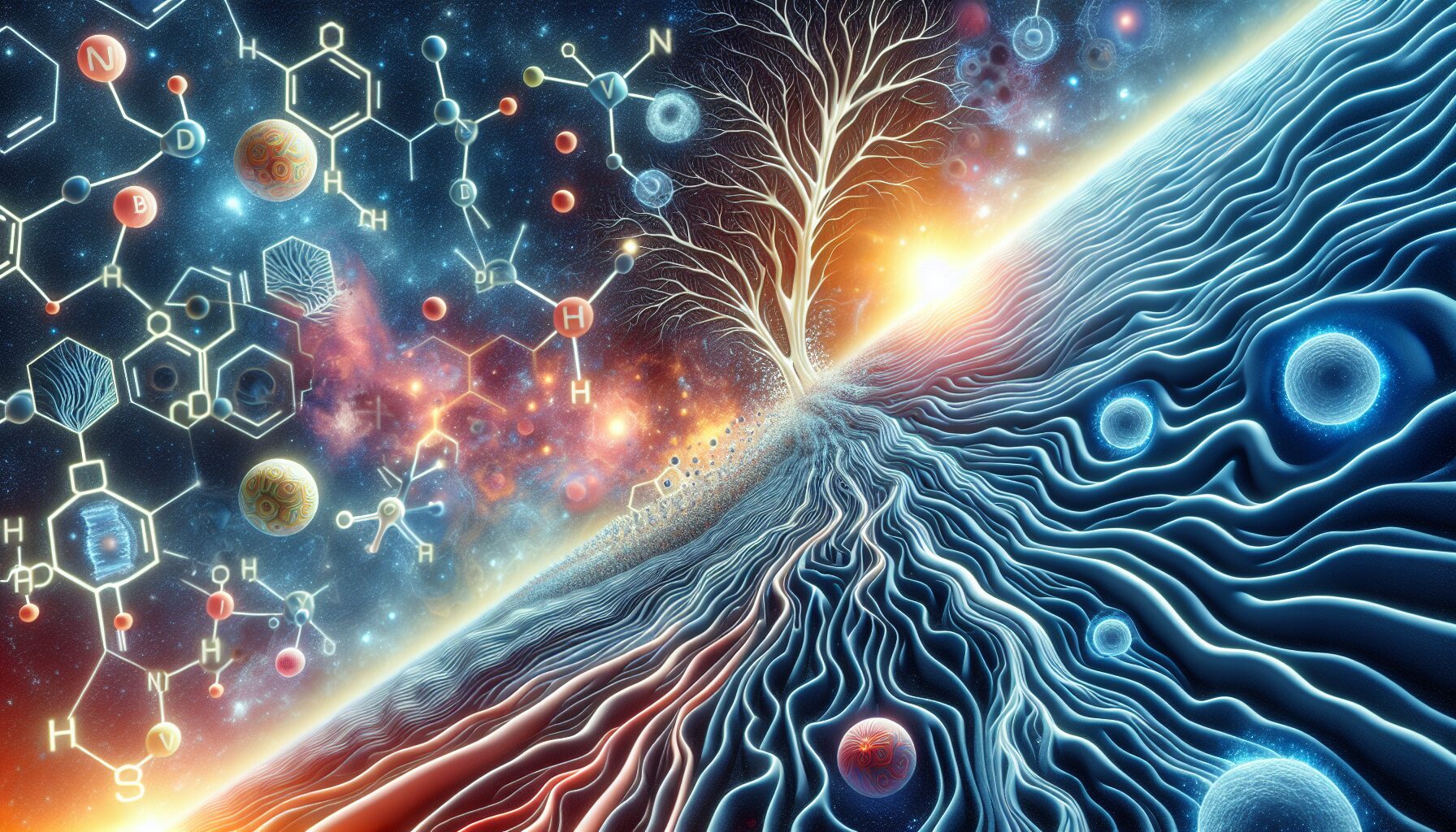Echoes of the Self: Depersonalization in Mystical Experience
In the world of psychology and spirituality, the concept of depersonalization often evokes a state of disconnection from oneself, as if one becomes an observer of their own life, detached from their emotions and surroundings. Yet, in the realm of mystical experiences, depersonalization can metamorphose from a clinical condition into a bridge connecting mundane reality to the profound unknown.
The Nature of Depersonalization
Depersonalization is characterized as a dissociative disorder where an individual feels estranged from their own thoughts, feelings, or sense of identity. The American Psychiatric Association defines it as a persistent sense of detachment from one’s body, often accompanied by the perception of being an outside observer.
Clinical symptoms include numbness, emotional flatness, and a peculiar sense of watching oneself from outside one’s body. Yet, this seemingly disconcerting condition finds an unexpected ally in mystical experiences, where the dissolution of the self becomes a transformative journey toward enlightenment.
Depersonalization as a Mystical Gateway
Mystics across various traditions speak of the dissolution of the ego, a process facilitative of experiencing unity with the divine or the universe. The Upanishads, ancient Indian texts explore the theme of Atman—the inner self—and its unity with Brahman, the universe’s ultimate reality. In this space, the boundaries of individual identity blur and diminish.
- Buddhist Practices: In Buddhism, the concept of Anatta or ‘not-self’ proposes the relinquishing of an illusory, permanent self. Through meditation and mindfulness, practitioners aim to experience a profound interconnectedness with all life. The feeling of depersonalization thereby becomes a spiritual achievement rather than an affliction.
- Sufi Mysticism: In Sufism, the mystical dimension of Islam, the loss of self is seen during states of Fana—spiritual annihilation where practitioners forget their essence to be absorbed in the oneness with God.
Quoting the renowned American psychologist William James from his classic work, The Varieties of Religious Experience, “The overcoming of all the usual barriers between the individual and the Absolute… brings about a mysticism of vast perspective.”
Psychological Impacts and Therapeutic Narratives
While the clinical understanding of depersonalization often deals with stress and trauma, examining this state through a mystical lens can offer alternative therapeutic narratives. Spiritual practices can provide individuals with coping mechanisms and transformational pathways, leading them toward self-discovery and healing.
A study published in SAGE Journals highlights, “Mystical states… resemble the psychological states during intensive clinical episodes.” This similarity suggests that both neurological and spiritual mechanisms may underpin these experiences.
Mysticism as a Narrative Shift
Approaching depersonalization through mystical and spiritual narratives can facilitate a paradigm shift, empowering individuals to see their experiences not as debilitating, but as opportunities for profound personal growth. The eminent psychoanalyst Carl Jung argued, “The sole purpose of human existence is to kindle a light of meaning in the darkness of mere being.”
“Knowing your own darkness is the best method for dealing with the darknesses of other people.”
This reframe encourages the person undergoing depersonalization to embrace their experience as a quest for greater self-awareness and universal understanding, much as mystics do.
Conclusion: Embracing the Echoes
In the elegant dance of existential crises and spiritual triumphs, depersonalization in mystical experiences can evolve from a shadowy void into a sanctuary of quiet wisdom and existential insight. As the separation between self and the cosmos subtly fades, what remains is a profound echo—an echo of the self, reverberating through the corridors of the infinite.
Exploring the echoes of the self in mystical experiences is not about finding quick solutions; it’s about embracing the journey into the depths of one’s psyche, recognizing that what may feel like loss could indeed be a gateway to spiritual awakening.
In echoing the wise words of Rumi, the 13th-century Persian poet: “The wound is the place where the Light enters you.” Let us explore these wounds—the dissolving self—both under the clinical lens and through the mystical telescope, ensuring the healing light reaches all corners of the human experience.


